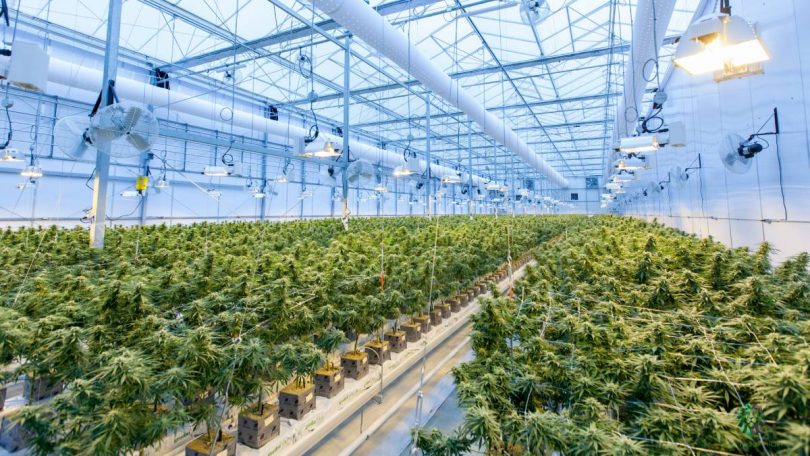Thanks to the lengthy prohibition of cannabis in the United States, the plant has been woefully understudied, and information vital to cultivation is simply not available. Recent research is beginning the catch-up process towards in-depth knowledge of optimal growth conditions for Cannabis sativa.
Researchers are evaluating optimal nutrient acquisition ranges for C. sativa plants to understand how to best keep crops nourished and produce quality flower at maximum capacity. Studies are now beginning to elucidate the amounts of each micro- and macronutrient cannabis plants will acquire from soil, given availability, as well as the differences in those amounts between cultivars.
The Survey Method
A team of researchers selected thirteen common hemp cultivars and grew twelve of each. [1] The plants were placed in identical pots with a peat-based soil mixture. The cultivars were then left in a greenhouse to mature to their vegetative growth state. The researchers used an automatic irrigation system to apply fertilizer regularly.
When the plants were in their vegetative growth state, the most recently mature leaves were harvested and dried. The remaining leaf tissue was then analyzed for nutrient composition. The goal was to determine the amount of nutrients the plants could acquire from the soil under optimal greenhouse conditions and expand upon existing data on nutrient acquisition ranges.
Macronutrient Acquisition
The survey found an acquisition range that expanded substantially on the existing known range. Certain macronutrients, like nitrogen, saw maximum levels found in plants rise to 4.98%. Calcium boasted a top end of 5.34%, well over the previously reported maxima of 2.14% [2].
While the vast majority of data in the range trended upward from the previous reference data set, the values for phosphorus trended slightly downward. The study authors conclude “Our findings suggest that the maximum macronutrient concentration should be increased for N (4.98%), K (3.41%), Ca (5.34%), and S (0.37%).”
Micronutrient Acquisition
The upward trend continued in the micronutrients as well. The plants surveyed took in more iron than previously reported, with the upper limit for iron jumping from the established 132 mg to 169 mg. Manganese made an impressive leap from 72 mg to 264 mg.
Copper, however, was an outlier. The plants in the study acquired less copper than in previous studies, with its lower limit dipping to 1.6 mg from 1.8 mg. Aluminum levels changed even more as both its upper and lower limits fell. The lowest amount of aluminum found in a plant was just 0.1 mg. “[M]icronutrient leaf tissue analyses indicated that maximum concentrations should be increased for Fe (169 mg·kg−1), Mn (264 mg·kg−1),and Zn (54.9 mg·kg−1), while ranges for Cu and Al should include minimum values of 1.6 mg·kg−1 and 0.1 mg·kg−1.”
Why Cultivars Matter
Everything in this study was based around ranges of data, and while the overall goal was finding the upper and lower reaches of those ranges, it’s important to get to the heart of why those ranges exist.
While no two plants will behave identically, the breadth of the ranges comes from variations between cultivars. If this study demonstrated anything, it has shown that different cultivars have different needs and different optimal nutrient ranges. It also shows that anyone looking to grow various cultivars in the same greenhouse environment will need to account for the full nutrient range across all cultivars.
To put this into perspective, the top end values between cultivars varied nearly as much as the full data ranges. For example, the top end level for nitrogen in one cultivar was 4.98%. Another cultivar’s upper limit for nitrogen was 4.09%. The range for calcium was even more pronounced. One cultivar’s top end was 5.34% whereas a different cultivar’s top only reached 1.68%.
The same held true for micronutrients as well. The top amount of iron acquired by one cultivar was just 99.7 mg, while another cultivar took in 169.0 mg of iron. Even the lower limits varied wildly. One cultivar absorbed just 66.5 mg of manganese while another’s lower limit was a substantial 233 mg, nearly four times the previous cultivar!
Clearly, more research needs to be done, and more cultivars need to be surveyed. The current data highlights that the diversity in cultivars plays a big role in the overall nutrient acquisition range of cannabis plants. It’s also clear that cultivators need to either account for the full range of nutrient acquisition or tailor individual fertilization mixtures to a cultivar’s unique needs. As more research is done, the complete range is likely to expand as more plants are surveyed.
References
[1] Kalinowski J, Edmisten K, Davis J, McGinnis M, Hicks K, et al. Augmenting nutrient acquisition ranges of greenhouse grown CBD (cannabidiol) hemp (Cannabis sativa) cultivars. Horticulturae. 2020;6(4):98. https://doi.org/10.3390/horticulturae6040098 [journal impact factor = 2.331; times cited = 1][2] Landis H, Hicks K, Cockson P, Henry JB, Smith JT, et al. Expanding leaf tissue nutrient
survey ranges for greenhouse cannabidiol-hemp. Crop Forage Turfgrass Manag. 2019;5:1–3. [journal impact factor = 0.71; times cited = 4]








